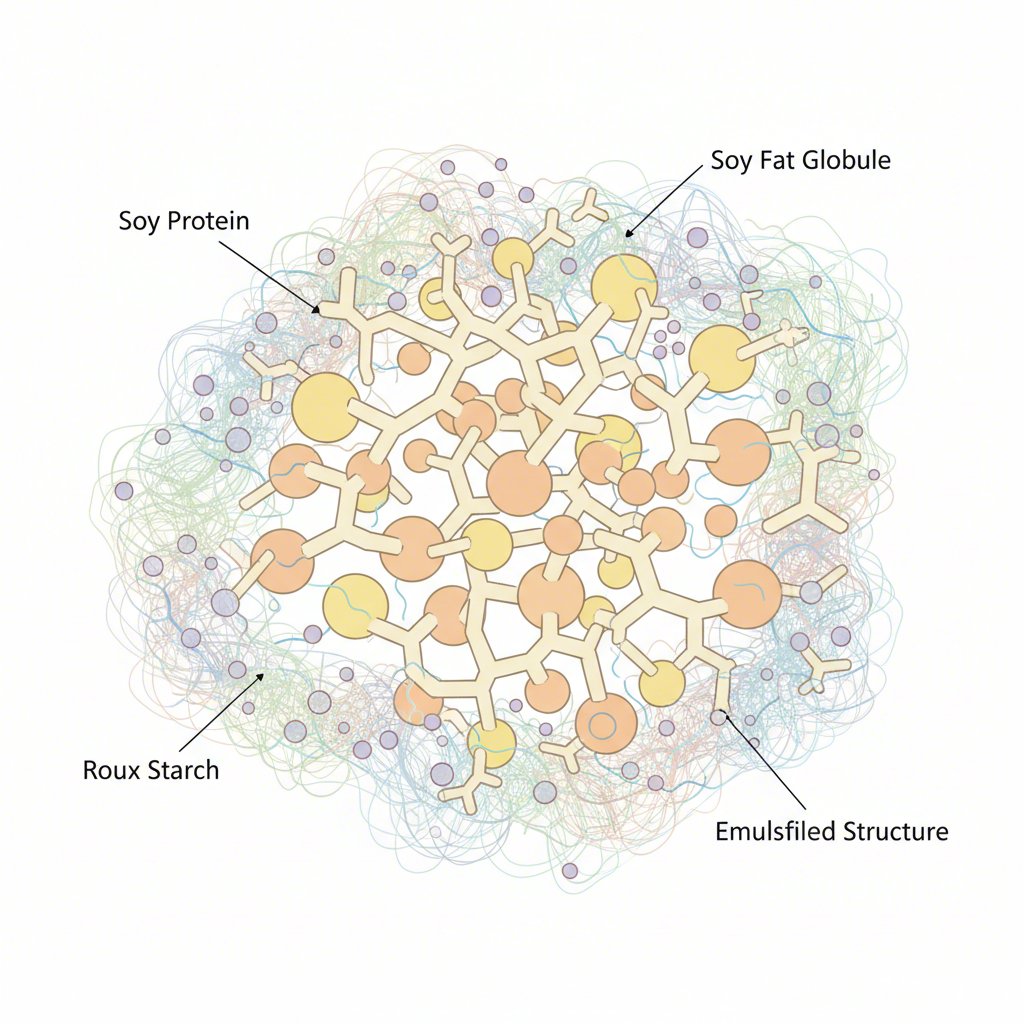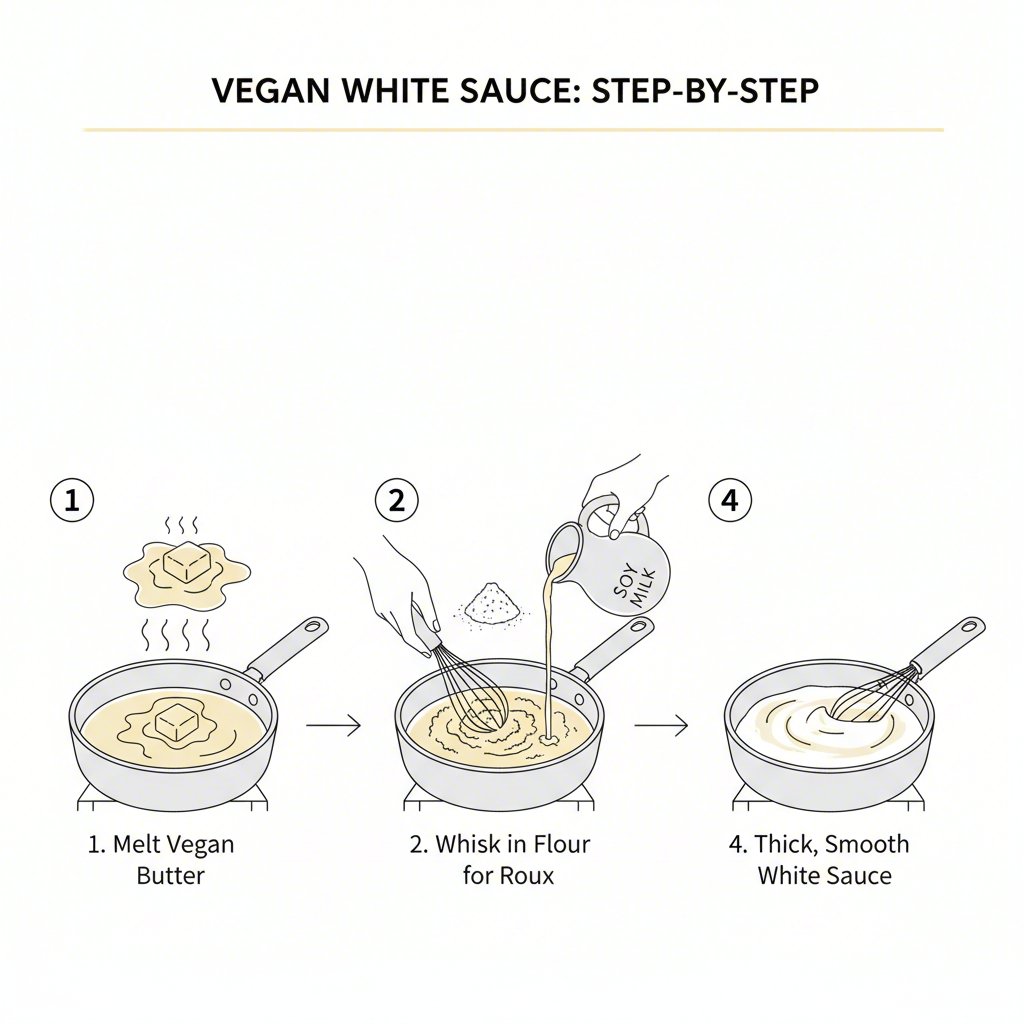TL;DR
Yes, unsweetened soy milk is an excellent choice for a rich and creamy vegan béchamel sauce. Its savory flavor, higher protein content, and stability make it ideal for creating a classic white sauce that resists curdling. The process is simple: make a roux with vegan butter or oil and flour, then gradually whisk in the soy milk until it thickens into a smooth, luscious sauce perfect for lasagnas, gratins, and pasta bakes.
Why Soy Milk Is a Superior Choice for Vegan Béchamel
When crafting a dairy-free béchamel, the plant milk you choose is the most critical ingredient, defining the sauce’s final texture and flavor. While many options exist, unsweetened soy milk consistently stands out as the superior base. Its properties are uniquely suited for this classic French mother sauce, ensuring a result that is both authentic and reliable. The key is to select a product that is unflavored and, most importantly, unsweetened to avoid introducing unwanted sweetness to your savory dish.
The science behind its success lies in its composition. Compared to thinner nut milks like almond, soy milk typically has a higher protein and fat content. This composition is crucial for creating a richer, creamier sauce that emulsifies beautifully. As noted by Heartful Table, soy milk’s savory profile and protein make it unlikely to curdle when heated, a common issue with other plant milks. This stability gives you a much more forgiving cooking process and a dependably smooth result every time.
While soy milk is a top contender, it’s helpful to see how it compares to other popular choices. Oat milk is another excellent option, praised for its neutral flavor and creamy texture. Almond milk can be used, but it’s often thinner and can sometimes impart a subtle nutty sweetness that may not be desirable in all dishes. For a guaranteed savory outcome, always check the ingredients on your soy milk carton to ensure there are no added sugars or vanilla flavorings.
| Plant Milk | Flavor Profile | Creaminess | Stability (Curdling Risk) |
|---|---|---|---|
| Soy Milk | Neutral to slightly savory | High | Low |
| Oat Milk | Neutral, slightly sweet | High | Low |
| Almond Milk | Slightly nutty and sweet | Medium to low | Medium |
For those dedicated to pure flavor and avoiding additives, making your own plant milk at home is an empowering option. If you’re exploring this, resources like Soy Milk Quick offer comprehensive guides on the best plant milk makers, allowing you to control the ingredients and achieve the perfect consistency for your culinary creations.

Mastering the Roux: The Foundation of Your Béchamel
The heart of any great béchamel sauce, vegan or otherwise, is the roux. This simple paste of fat and flour is the essential thickening agent that gives the sauce its body and velvety texture. Mastering this step is straightforward and is the key to a flawless final product. The core ingredients are incredibly simple, yet the technique is what makes the difference between a silky sauce and a gritty one.
To begin, you will need a fat, a flour, and your unsweetened soy milk. Here is a basic list to get you started:
- Fat: Vegan butter or olive oil are the most common choices. Vegan butter, as used in the recipe from This Savory Vegan, lends a richer, more traditional flavor and creaminess. Olive oil, as suggested by Loving It Vegan, provides a lighter, fruitier note. The choice depends on your personal preference and the dish you’re creating.
- Flour: All-purpose white flour is the standard for its neutral flavor and excellent thickening properties.
- Liquid: Warmed, unsweetened soy milk is the star. Warming the milk before adding it helps prevent lumps from forming.
- Aromatics (Optional): For a more complex flavor, you can infuse the soy milk beforehand with half an onion, a couple of cloves, and a bay leaf, a technique highlighted by School Night Vegan.
The process begins by melting your chosen fat in a saucepan over medium-low heat. Once melted, you’ll whisk in the flour to form a paste. A crucial step often overlooked is to cook this roux for at least one full minute, stirring constantly. This toasts the flour slightly, cooking out its raw taste and preventing your final sauce from having a pasty, uncooked flavor. A standard ratio to start with is equal parts fat and flour by weight, or a measure like 3 tablespoons of olive oil to 2 tablespoons of flour for a slightly looser roux.
Step-by-Step Instructions for a Flawless, Lump-Free Sauce
With your roux properly cooked, you are moments away from a perfect vegan béchamel. The final and most critical stage is incorporating the soy milk to create a smooth, creamy sauce. The key here is patience and constant motion. You’ll first create a roux, then slowly whisk in the infused soy milk and simmer until it reaches a perfectly creamy consistency. This gradual process is the secret to a lump-free sauce.
Follow these steps for guaranteed success:
- Warm the Soy Milk: If you haven’t already, gently warm your unsweetened soy milk in a separate saucepan or in the microwave. If you’re using aromatics like onion and a bay leaf, this is when you would infuse them. Warmed milk incorporates into the hot roux much more smoothly than cold milk, which can cause the mixture to seize and form lumps.
- Prepare the Roux: In a medium saucepan, melt 3 tablespoons of vegan butter or heat olive oil over medium heat. Whisk in 2-3 tablespoons of all-purpose flour until a thick paste forms. Continue whisking and cook the roux for 60-90 seconds to eliminate any raw flour taste.
- Add Milk Gradually: Remove the saucepan from the heat temporarily. Begin adding the warm soy milk to the roux about a quarter cup at a time. Whisk vigorously and continuously after each addition, ensuring the mixture is completely smooth before adding more milk. This slow, deliberate process allows the starch in the flour to absorb the liquid evenly.
- Simmer to Thicken: Once all the soy milk has been incorporated, return the saucepan to medium heat. Bring the sauce to a gentle simmer, stirring often. Continue to cook for 5-10 minutes as the sauce thickens. You’ll know it’s ready when it coats the back of a spoon.
- Season to Finish: Remove the sauce from the heat. Season with salt, white pepper, and a pinch of nutmeg. Taste and adjust the seasonings as needed. Your béchamel is now ready to use.
The science is simple: adding the liquid slowly gives the flour granules time to hydrate evenly. Rushing this step by dumping in all the milk at once overwhelms the flour, causing clumps to form instantly. By respecting this process, you ensure a silky, professional-quality sauce every time.

Customizations, Variations, and Pro-Level Troubleshooting
Once you’ve mastered the basic vegan béchamel, you have a versatile canvas that can be adapted for countless dishes. This sauce is your starting point for a world of creamy, savory creations. Whether you’re craving a rich cheese sauce for macaroni or need a gluten-free alternative, a few simple additions or substitutions can transform your béchamel.
Here are some popular variations to inspire you:
- Cheesy Béchamel (Mornay Sauce): This is perhaps the most popular variation. To achieve a rich, cheesy flavor without dairy, stir in nutritional yeast, a spoonful of white miso, and a touch of dijon mustard after the sauce has thickened. This combination provides a savory, umami-packed flavor perfect for vegan mac & cheese or lasagna.
- Herb-Infused Béchamel: Infuse the soy milk with fresh herbs like thyme, rosemary, or parsley along with the traditional onion and bay leaf. This adds an aromatic depth that is wonderful in vegetable gratins or savory pies.
- Gluten-Free Béchamel: To make the sauce gluten-free, simply substitute the all-purpose flour with a good quality 1-to-1 gluten-free flour blend. The process remains exactly the same.
Even with a great recipe, issues can sometimes arise. Don’t worry—most common problems are easily fixed. Here’s a quick guide to troubleshooting your sauce.
| Problem | Solution |
|---|---|
| Sauce is lumpy | Pour the sauce through a fine-mesh sieve to strain out lumps. For a quicker fix, use an immersion blender for a few seconds until smooth. |
| Sauce is too thin | The sauce will thicken as it cools. If it’s still too thin, either simmer it for a few more minutes or create a small, separate roux (a ‘beurre manié’) with 1 tsp each of vegan butter and flour, then whisk it into the sauce and simmer until thickened. |
| Sauce tastes floury | This means the roux wasn’t cooked long enough. Unfortunately, this can’t be fixed after the fact. Next time, ensure you cook the roux for at least a full minute before adding any liquid. |
| Sauce is too thick | Simply whisk in a little more warm soy milk until you reach your desired consistency. |
Frequently Asked Questions
1. Can I use soy milk to make bechamel?
Absolutely. Soy milk is one of the best non-dairy milks for making béchamel because its higher protein content provides a creamy texture and makes it less likely to curdle when heated. For best results, always use an unsweetened and unflavored variety.
2. What’s the best milk for vegan bechamel?
Unsweetened soy milk and oat milk are widely considered the best options for a vegan béchamel. Both have a neutral flavor and create a rich, creamy consistency that closely mimics traditional béchamel. It is best to use a plant-based milk with some fat content for a richer result.
3. What is a good substitute for whole milk in béchamel sauce?
Unsweetened soy milk is an excellent substitute for whole milk in béchamel sauce. Its creamy texture and savory profile make it an ideal dairy-free alternative. Other good options include oat milk or a high-quality, protein-enriched rice milk.
4. What kind of milk do you use for béchamel sauce?
For a traditional béchamel, whole dairy milk is used for its fat content, which creates a rich and creamy sauce. For a vegan béchamel, the best alternatives are unsweetened soy milk or oat milk, as they provide a similar creaminess and a neutral flavor that works well in savory dishes.
